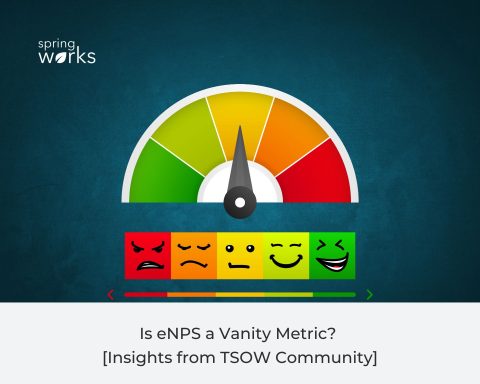In today’s digital age, effective communication is paramount in every aspect of business, including human resources (HR). As HR professionals strive to engage and connect with employees, leveraging graphic design can significantly enhance communication effectiveness.
This guide aims to explore the importance of graphic design in HR communication and provide practical insights into utilizing design principles to create compelling HR materials.
1. Importance of Graphic Design in HR Communication
Graphic design plays a crucial role in HR communication by visually conveying information in a way that is engaging, memorable, and easy to understand. In the HR context, effective communication is essential for various processes such as recruitment, onboarding, training, policy dissemination, and employee engagement. Well-designed materials can capture the attention of employees, facilitate comprehension, and evoke emotional responses, leading to better retention and engagement.
2. Understanding Design Principles
Before delving into specific applications, it’s essential to understand fundamental design principles that govern effective visual communication. These principles include:
- Hierarchy: Organizing information based on importance to guide the viewer’s attention.
- Typography: Selecting appropriate fonts and text formatting for readability and emphasis.
- Color Theory: Utilizing colors strategically to evoke emotions and convey meaning.
- Whitespace: Allowing adequate space around elements to improve clarity and readability.
- Consistency: Maintaining uniformity in design elements to create a cohesive visual identity.
By adhering to these principles, HR professionals can create visually appealing and impactful communication materials.
3. Incorporating Visual Elements in HR Communication
Incorporating visual elements such as images, icons, and illustrations can significantly enhance the effectiveness of HR communication. Visuals have the power to convey complex information quickly and intuitively, making them ideal for conveying HR policies, procedures, and guidelines.
When selecting visual elements, it’s essential to choose ones that align with the message and resonate with the target audience. Additionally, using consistent visual elements across different HR materials helps reinforce brand identity and recognition.
4. Designing Effective Infographics for HR
Infographics are an excellent tool for presenting complex information in a visually engaging format. In the HR context, infographics can be used to communicate statistics, processes, or organizational structures effectively. When designing HR infographics, it’s crucial to prioritize clarity and simplicity while maintaining visual interest. Utilizing icons, charts, and diagrams can help break down information into digestible chunks and enhance comprehension. Moreover, incorporating the company’s branding elements ensures consistency and reinforces the organizational identity.
For creating visually stunning infographics, HR professionals can leverage user-friendly AI infographic tools or poster maker tools available online. These tools provide a wide range of customizable poster templates, graphics, and fonts, allowing users to design professional-looking infographics with ease. By using a poster maker, HR professionals can streamline the design process and create impactful infographics that effectively convey HR-related information to employees and stakeholders.
5. Creating Compelling Presentations for HR Purposes
Presentations are a common medium for delivering HR-related content, such as training sessions, policy updates, and employee orientations. To create compelling HR presentations, HR professionals should pay attention to both content and design. AI slide maker, can help create visually engaging slides with high-quality images, unpixelate images, clear typography, and consistent branding can capture the audience’s attention and reinforce key messages. Additionally, incorporating storytelling techniques and interactive elements can enhance engagement and retention among employees. It’s worth mentioning that integrating PowerPoint macros can significantly reduce the time spent formatting and updating recurring presentation materials.
6. Utilizing Graphic Design for Recruitment and Onboarding
Recruitment and onboarding are critical stages in the employee lifecycle, and effective communication plays a vital role in ensuring a smooth transition for new hires. Graphic design can be leveraged to create visually appealing recruitment materials such as job postings, career fairs, and recruitment brochures. By using eye-catching designs and compelling messaging, organizations can attract top talent and create a positive first impression. Similarly, incorporating design elements into onboarding materials such as employee handbooks, training manuals, and welcome kits can help new hires feel informed and engaged from the outset.
One valuable tool for creating visually stunning recruitment materials is a AI poster maker. With the poster maker app, HR professionals can easily design captivating posters for job openings, company events, or career fairs. These tools often provide a range of customizable templates, graphics, and fonts, allowing users to create professional-looking posters without the need for graphic design expertise. By leveraging a poster maker, HR teams can streamline the process of creating recruitment materials and ensure consistency in branding and messaging across different channels.
7. Enhancing Employee Engagement through Design
Employee engagement is essential for maintaining productivity, morale, and retention within an organization. Graphic design can be a powerful tool for enhancing employee engagement by creating visually stimulating communication materials that resonate with employees. Whether it’s designing internal newsletters, recognition programs, or employee surveys, thoughtful design choices can foster a sense of belonging and connection among employees. By incorporating elements of gamification, interactivity, and personalization, HR professionals can further enhance engagement and promote a positive organizational culture.
Conclusion
In conclusion, graphic design plays a crucial role in enhancing HR communication effectiveness. By understanding design principles and incorporating visual elements into HR materials, organizations can create compelling communication materials that engage, inform, and inspire employees. Whether it’s designing infographics, presentations, recruitment materials, or employee engagement initiatives, thoughtful design choices can make a significant impact on employee perception and behavior.
As HR professionals continue to adapt to evolving communication trends, leveraging graphic design will remain a valuable strategy for fostering meaningful connections within the workplace.








